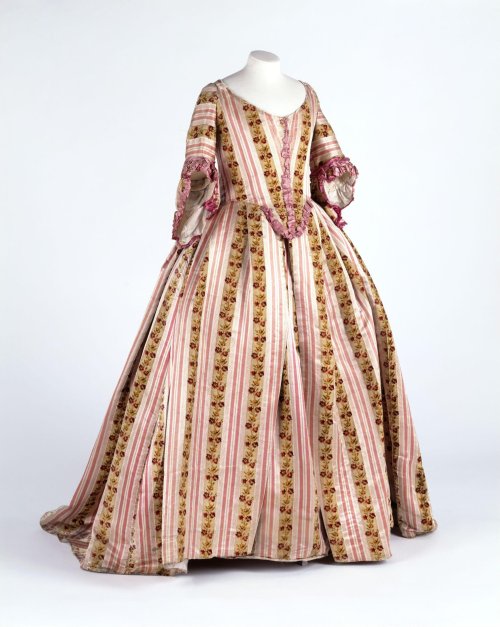everysinglefrancaise: Sack1774-1775 (weaving), 1775 - 1780 (sewing), 1870 - 1910 (altered) &nbs
everysinglefrancaise: Sack1774-1775 (weaving), 1775 - 1780 (sewing), 1870 - 1910 (altered) The sack or robe à la francaise had loose pleats at the back of the neck and an open front. It was a style that dominated women’s fashions during the 18th century. It developed from a loose negligee but by the 1770s it had become a more formal type of dress and would have been worn for attending assembly rooms, dinner parties, the theatre or the opera.This is a very rare example of the use of velvet in 18th-century women’s dress. Normally fabrics are printed after the weaving process. In the chiné technique, the warp threads are printed before, and during weaving the slight pulling of the threads gives the pattern a blurred effect, resembling a watercolour when finished. In this extraordinary example, the chiné process has been combined with velvet - a difficult technique that was produced only in a few places in France. The silk for this fabric is reputed to have cost 36 shillings a yard. With an average of 17 yards required for a sack and petticoat of this style, the fabric would today cost about £2,200. x -- source link
Tumblr Blog : everysinglefrancaise.tumblr.com
#18th century#fashion history


